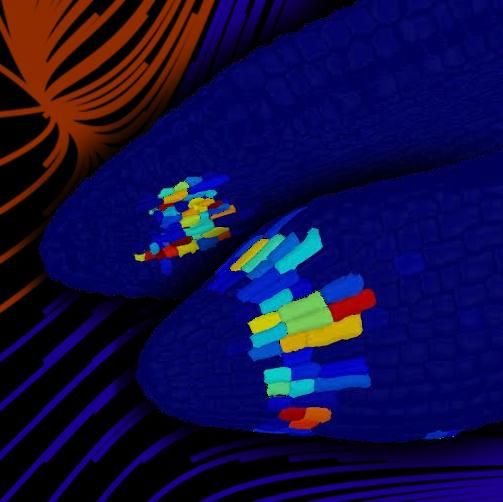Seeds May Use Tiny “Brains” to Decide When to Germinate
Two clumps of cells send hormone signals to each other to help determine when the time has come to sprout
/https://tf-cmsv2-smithsonianmag-media.s3.amazonaws.com/filer/ce/b0/ceb03a40-6af0-48aa-b0c4-ed58709a373d/s2-1920.jpg)
There are plenty of things that determine whether a plant survives or whether it wilts away. And many factors are out of their control. But as Tia Ghose reports for Live Science, plants may actually make a decision about one key to their survival: when to germinate.
A new study, published in The Proceedings of the National Academies of Science, suggests that plant seeds use tiny “brains” to help them decide whether it’s the right time to break dormancy. As Ghose reports, the “brains” aren’t physically similar to human or other vertebrate grey matter. Instead the seeds' control center processes information much like brains do. They use bundles of specialized cells to process hormone signals that tell them when it's prime time and they should sprout.
“Plants are just like humans in the sense that they have to think and make decisions the same way we do,” George Bassel, plant biologist at the University of Birmingham and an author on the study, tells Ghose.
The researchers examined seeds from Arabidopsis otherwise known as thale cress—a plant commonly used in studies due to its short life cycle. Seeds need to balance two important factors when germinating: temperature and competition. If they sprout too soon they could face cold temperatures and potentially freeze to death. If they wait too long, earlier-sprouting plants can outcompete them.
The seed has two hormones: abscisic acid (ABA), which sends the signal to stay dormant, and gibberellin (GA), which initiates germination. The push and pull between those two hormones helps the seed determine just the right time to start growing.
According to Ghose, some 3,000 to 4,000 cells make up the Arabidopsis seeds. So the researchers cataloged these cells in an atlas to study this system. They then monitored where the two hormones were found within the seed. It turned out that the hormones clustered in two sections of cells near the tip of the seed—a region the researchers propose make up the “brain.” The two clumps of cells produce the hormones which they send as signals between each other. When ABA, produced by one clump, is the dominate hormone in this decision center, the seed stays dormant. But as GA increases, the “brain” begins telling the seed it’s time to sprout.

This splitting of the command center helps the seed make more accurate decisions, says biomathematician Iain Johnston, who was also an author on the study. “The separation of circuit elements allows a wider palette of responses to environmental stimuli,” he says in a press release. “It’s like the difference between reading one critic's review of a film four times over, or amalgamating four different critics' views before deciding to go to the cinema.”
The latest study adds to the growing body of evidence that plant complexity has been underestimated in the past. Mounting evidence suggests that plants may have some means of rudimentary communication. Just last year, researchers discovered that a type of fungus can serve as an underground forest "internet" capable of transporting carbon, nutrients and signal chemicals between trees. There is even some evidence that plants can send signals using electrical pulses, vaguely akin to how the human nervous system works (but with many, many important distinctions).
The idea of seed "brains" not only adds to this vegetative capacity but could also have big impacts on agriculture, leading scientists to control seed germination and increase efficiency of plant growth.